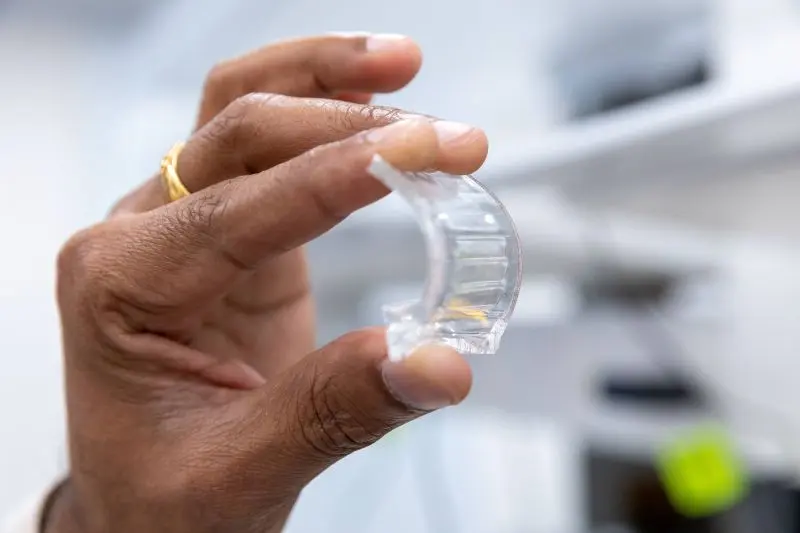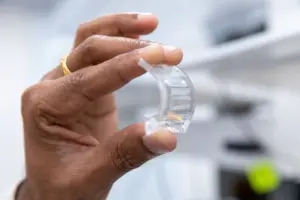Researchers at the University of Melbourne, in collaboration with KDH Design Corporation and the Melbourne Centre for Nanofabrication (MCN), have made a significant breakthrough in the field of augmented reality (AR) technology. They have successfully created the world’s first flexible, transparent AR display screen using 3D printing and low-cost materials. This development has the potential to revolutionize the use of AR across various industries and applications.

AR technology superimposes digital content onto the real world, enhancing the user’s perception and interaction with their environment in real time. However, the creation of flexible AR technology that can adapt to different angles of light sources has been challenging. Current mainstream AR manufacturing relies on glass substrates, which involve time-consuming and expensive processes such as photomasking, lamination, cutting, or etching microstructure patterns. These processes also have a low yield rate and are difficult to seamlessly integrate with product appearance designs.
Led by Associate Professor Ranjith Unnithan, Professor Christina Lim, and Professor Thas Nirmalathas from the University of Melbourne, in collaboration with KDH Design Corporation, the team has achieved a groundbreaking feat by developing a transparent AR display screen using low-cost, optical-quality polymer and plastic materials. This achievement is unprecedented in the field of AR displays.

The team employed additive manufacturing techniques, also known as 3D printing, in the fabrication process, making it a pioneering approach in the AR display field. KDH Design Corporation, known for manufacturing AR motorbike helmets and military goggles, will incorporate this technology into the visor of head-worn devices such as AR glasses, AR sports goggles, AR helmets, and automotive displays.
The newly developed display screen is both flexible and versatile, allowing it to bend and fit different shapes, including curved or uneven surfaces. This flexibility grants designers more freedom to accommodate various product form factors. Furthermore, the display screen is transparent, ensuring users have a natural and unobstructed view while overlaying digital content.
The use of additive manufacturing techniques offers precise control over design and production, resulting in higher-quality products. It also opens up possibilities for cost-effective and scalable mass manufacturing, making the technology more accessible and affordable across a wide range of applications.
Associate Professor Ranjith Unnithan expressed that this breakthrough signifies a significant advancement in AR technology with vast potential applications. For instance, in the gaming industry, flexible and transparent AR displays could be integrated into gaming accessories like goggles or visors, providing a more immersive and realistic gaming experience. In education, AR displays could be incorporated into tools and simulations to facilitate interactive and engaging learning experiences. In the healthcare sector, AR displays could be used in medical training to assist surgeons with real-time information during operations. The potential applications extend to areas such as transport and tourism as well.
Jeremy Lu, CEO of KDH Design Corporation and a University of Melbourne alumnus, stated that after four years of collaborative research, they have achieved the ultimate AR technology they envisioned. This technology is ultra-thin, highly power-efficient, and lightweight, making it suitable for near-eye applications like AR glasses and goggles. They also aim to utilize the AR technology for transparent displays, such as car windscreens.
KDH Corporation’s CTO, Younger Liang, emphasized that the collaboration with the University of Melbourne researchers enabled the development of a prototype that aligned with their vision. They are now poised to commercialize this technology for a wide range of exciting applications.
Professor Nicolas Voelcker, Scientific Director of the Melbourne Centre for Nanofabrication, expressed excitement about collaborating with KDH Design Corporation and the University of Melbourne to support their efforts in developing new flexible materials for AR displays. The Melbourne Centre for Nanofabrication, equipped with cutting-edge technologies and expert process engineers, is a world-class nanof

